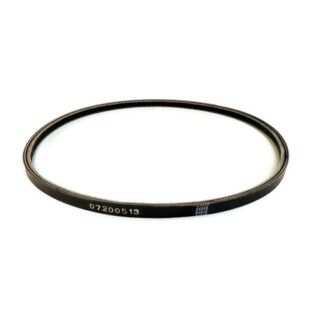
Snowblower End-of-Season Maintenance Checklist [Printable]
Learn how to prepare your snowblower for summer storage
Maybe you cheer when it’s time to store your snowblower for the summer. Maybe you mourn, knowing that the fun of launching snow into the air with ease will have to pause until next year.
Regardless, before you put your snowblower away for the year, you’ve got to do a little maintenance to keep it in good condition for the next snowfall.
So what all do you need to do to properly summerize your snowblower? We’re glad you asked.
We’ll walk you through some crucial steps for end-of-season snowblower maintenance. We’ve even thrown in a handy maintenance checklist for annual use. (Find it here or at the bottom of the page.)
First things first: when doing any work on outdoor power equipment, be sure to do it somewhere that is environmentally friendly. Ideal locations would be a garage or a driveway where spillage or leaking fluid won’t drain into the ground or water supply.
Be sure to have cleanup materials and rags handy as well.
1. Take care of your snowblower's fuel system
Since snowblowers and snow throwers have a longer downtime than most outdoor power equipment, it’s best to run them out of gas at the end of the season, especially if the fuel in your tank is more than a week old. This helps prevent any old gas from being in the carburetor, fuel lines, or fuel tank the following season when you take your snowblower out of storage.
However, if you just filled the tank or don’t want to run the tank dry, you have another option. Many snowblowers have a fuel shut-off valve that will allow you to run the carburetor dry of gas while still leaving the tank full.
Before shutting the gas line off, add a fuel stabilizer according to the manufacturer’s instructions on the stabilizer bottle. Let the engine run for at least five minutes so that the mixture can blend and then shut off the valve, allowing the carburetor to run dry and the engine to stop on its own.
Next season, you will want to mix fresh gas with the stabilized gas.
If you need a fuel stabilizer, or if your fuel system shows any signs of potential problems, The ROP Shop sells many of the replacement parts you need, including carburetors and rebuild kits, starter drive gear pinions, fuel shut-off valves, and ignition coil models.





2. Lubricate your snowblower
Moving parts in your snowblower likely need to be lubricated. According to Ariens, the most common parts include tractor components (hex shaft, gears, chain, pinion shaft), the axle shaft, and the augers. The last of these will require that you remove the shear bolts and pump grease into the shaft fittings; then spin the augers with your hand to spread the grease.
This is a good time to examine shear pins or bolts, as well as hair or cotter pins, for damage.
If you find any wear or need to replace the parts mentioned above, contact The ROP Shop.
3. Clean your snowblower
Clean and remove salt and any other residue that may be corrosive from your unit. You can do this by using soap and water from a water bucket or water hose. It is not recommended to use a high-pressure water delivery system for cleaning your unit, as this may cause irreparable damage.
4. Perform other general maintenance
There are a few other things you’ll want to review before storing your snowblower or snow thrower:
- Check to see if an oil change is needed.
- Inspect the muffler for wear and rust.
- If you use tire chains, check them for damage and see if any tensioners need replaced.
- If you use hearing protection or earmuffs with Bluetooth capabilities, make sure they still work and remove the batteries—you’ll want to replace them with fresh ones next winter.
5. Store your snowblower the right way
It’s best to store your snowblower some place dry and free of excessive humidity. If you can, cover your unit to help prevent marring, animal nesting, or unwanted material in the air landing on it.
Wrapping up your snowblower maintenance
Now you know how to properly prepare your snowblower for summer storage. Following these steps will help to make the start of next winter much smoother.
Don’t forget to check out our other snowblower blogs when winter rolls around again, like our preseason preparation checklist or our snowblower tips and tricks blog.
You can also view our selection of replacement parts for snowblowers to help get your equipment back in peak condition.
[EDITED 2/2023]

Having trouble using your ROP Shop pressure washer surface cleaner? These tips can help you out.

Thinking about getting a pressure washer? Here are eight advantages to owning a pressure washer to help convince you.

Installing a new pressure washer pump doesn’t have to be a hassle. Let The ROP Shop walk you through it.

Ready to learn how to pressure wash quickly, effectively, and safely? Check out these eleven tips.